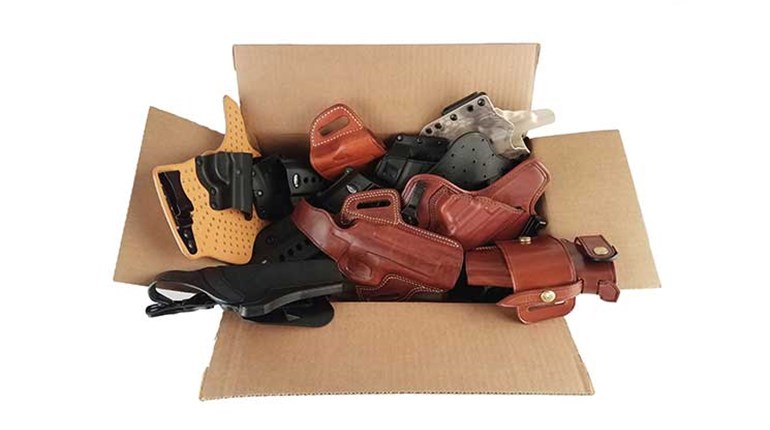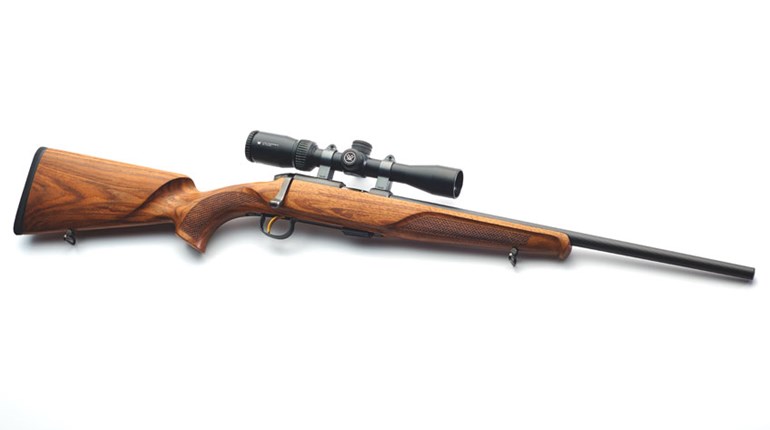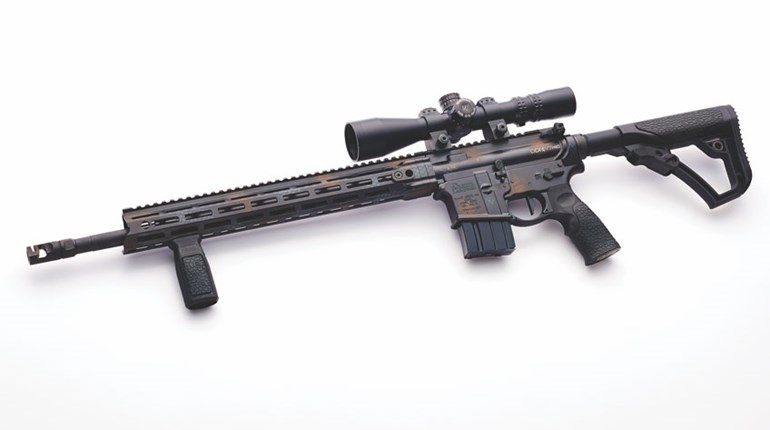
To suggest that the U.S. ammunition supply chain has been, er, turbulent for the last five or six years demonstrates no talent for overstatement. Recent, sloooooow calming notwithstanding, it has been a wild ride. It used to be you would walk into a gun store or department and find four or five recognizable “majors,” one or two more esoteric brands—and those often in calibers (and dusty boxes) seemingly fit for Africa, Alaska or Jurassic Park—and a comparative plethora of rimfire. Sometimes, an odd duck labeled “remanufactured” or “reloaded” would make an appearance, too.
If this description strikes a distant chord—or no chord at all—we suggest our point is made: It’s nothing like what you’ll encounter these days. Variety, both welcome and not, are hallmarks for the present. Chances are, you’ve already discovered that some of this fodder is better than others, but why this is so may not be clear. 9 mm oughta be 9 mm, right?
Well, maybe.
Regular availability is complexity prime: Just when you find something that your XYZ-123 eats up, supplies of that cartridge will disappear. That is why serious shooters of many stripes have long tested small samples and recorded lot numbers. Good-performing lots were/are then bought in quantity. Such testing requires some diligence and record keeping, and related acquisition a short cycle time. You also have to be able to throw several hundred dollars at the problem at a time. It isn’t exactly a trivial undertaking.
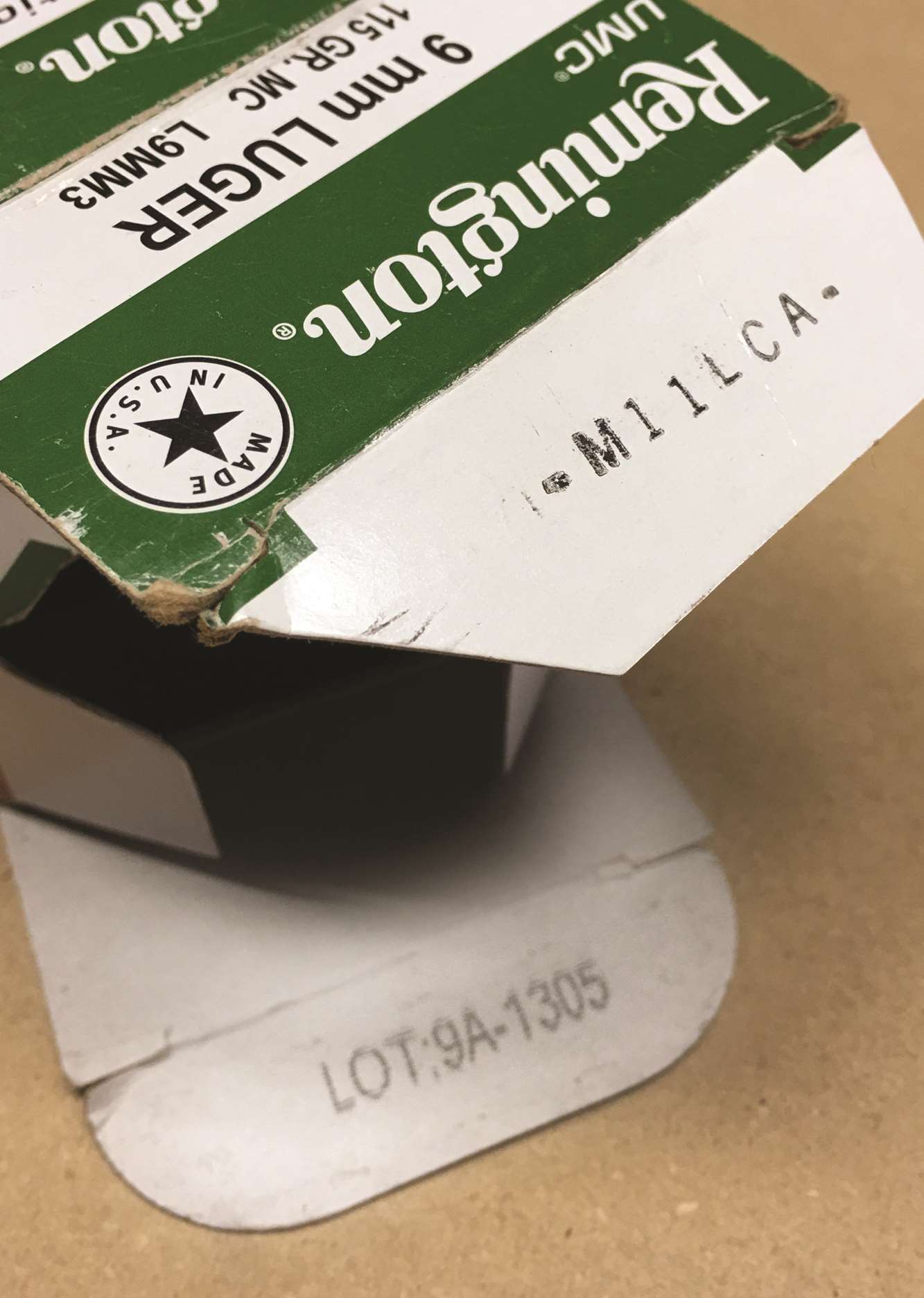
The good news here is that such a plan works reliably. It gets trickier, of course, with two ammo requirements—defensive and training/practice. But the solution is the same: Identify what feeds/functions reliably, and buy less often but in greater quantities.
As a practical matter, variation seems to be less punishing in training/practice ammunition in 9 mm and .45 ACP calibers. We believe this is due mainly to bullet profiles: 115- and 124-grain predominate in 9 mm, and 230-grain in .45 ACP, and the vast majority are “ball” type. These are the descendants of the original round/conical bullet configurations, and designed from the ground up for excellent auto-loader feeding. Their “vetting,” so to speak, is therefore extremely complete—more than a century in both cases—and results run from very good to flawless across a huge range of manufacturers. Defensive (read Carry Life-appropriate) ammo is more challenging; again, you need to test for superb reliability, and then buy accordingly.
Performance issues in both classes of .40 S&W and .380 ACP are somewhat more pervasive, and two-fold. First is a projectile shape issue. Worst in .40, but present in both calibers, the feeding difficulties stem mainly from the obsession with so-called “truncated cone” bullets. These can be either round-sided and flat-nosed, or flat-sided and flat-nosed, and either solid or hollow points. The reasons for the popularity of these shapes are beyond our present scope, but they get us to part “B” of the problem neatly, and it’s one that can affect any caliber at any time. To solve it, we tear a different page from the “buying ahead/lotting” book.
Projectile shape and weight are provided on packaging, but the maintenance of good functioning across brands may well require more. Two additional measures can save a lot of aggravation of the “bang-damn it!-hand cycle, bang-damn it!-hand cycle” type, but they have the inconvenience of not being provided on packaging. That they cannot even be readily Googled might lead a cynic to conclude they are sort of a secret.
We’re talking about overall length (OAL) and crimp dimensions. If you reload, these are already familiar (perhaps too much so), but for the average gent or lady who shoots off-the-shelf ammunition, a major “huh?” may result.
The first is simple enough. OAL expresses bullet nose to case head length along the firing axis—it’s the largest/longest linear dimension of the cartridge. It is measured with ease if you have a dial/digital caliper, and ranges from slightly less than an inch in .380 ACP to not quite an inch and a third in .45 ACP. Within a caliber, ranges are narrower, but the intricate relationship of OAL to bullet type is far more important than the number itself, and vastly affects how well or poorly a cartridge feeds. A correct OAL means that the rigid cartridge will travel the high speed, 3D, curvilinear path from magazine to chamber, while correctly consuming the charging energy stored in the recoil spring by the movement of the slide. Incorrect OAL means the reverse: Inopportune collisions along the way that waste feeding energy and lead to malfunctions.
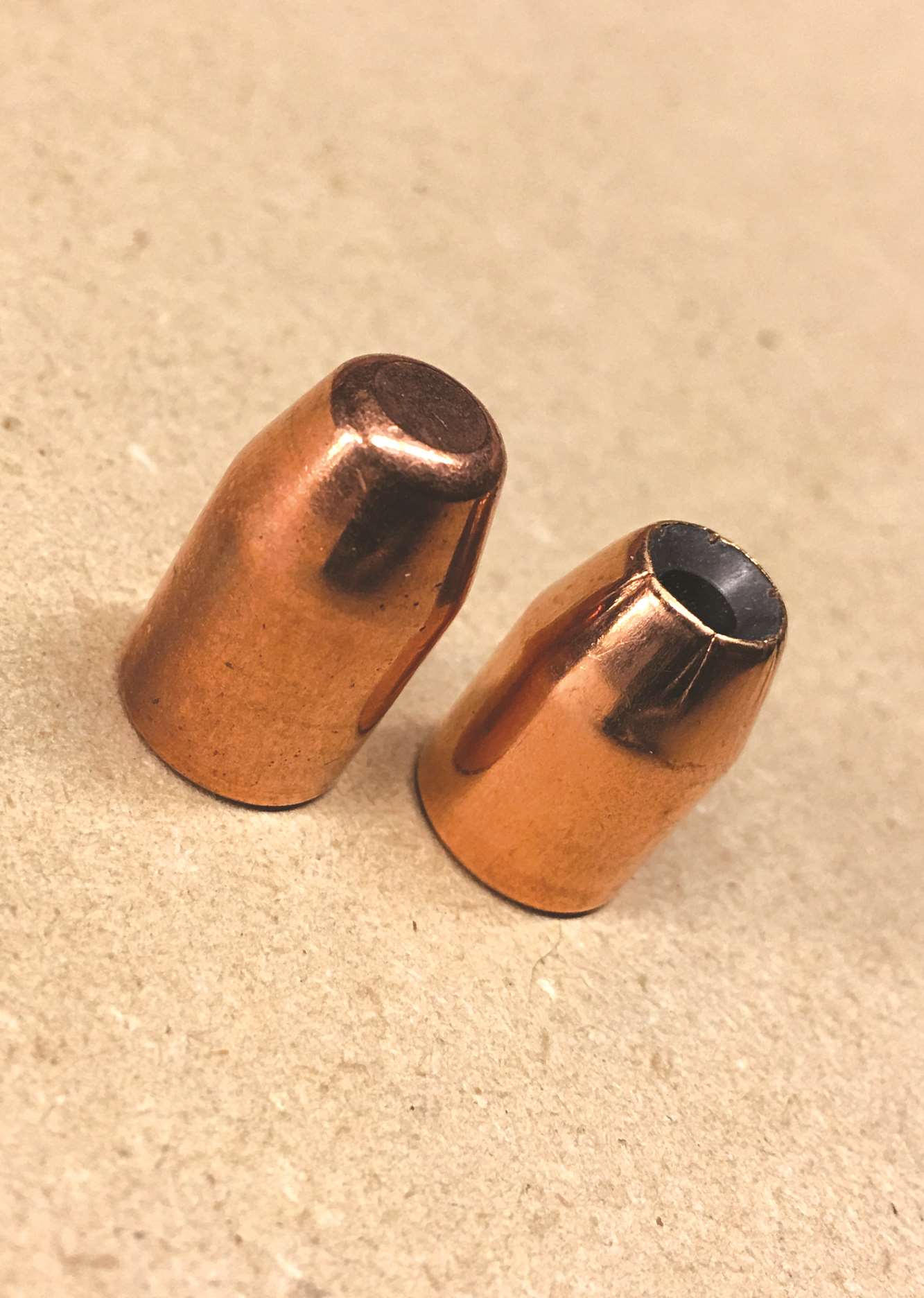
Our point is perhaps an obvious one: Measure OALs that work in your firearms, and record them along with bullet shape and weight. Especially with conical or round-nosed bullets, dimensions are surprisingly forgiving. We often see +/- .010 make no difference whatsoever. If you can’t buy what you already know works, at least you have another metric to apply to a potential substitute.
Crimp is a measurement that helps determine whether the end of the OAL-dominated feed process occurs correctly. It’s a little trickier to measure, too. Basically, it’s the sum of bullet caliber and case thickness on both sides at the end of the case mouth. This matters because it controls case seating in the chamber: Good seating means that the “shoulder” created at the case mouth solidly engages (and stops at) the far end of the chamber, leaving the bullet protruding into the leade of the rifling in the barrel itself.
Crimp is a big deal because the case mouth must be “flared,” that is, opened, prior to the bullet being seated in the manufacturing process. That flare must be reclosed around the bullet. If the flare is closed too little, the brass of the still-slightly-open case mouth will create enough friction against the chamber walls that the cartridge will not seat. This means your handgun is “out of battery,” a condition which the vast majority of firearms mechanically sense, and deactivate the trigger. If crimp is closed too much, interception of the chamber/barrel shoulder is also compromised. This is less common, but can degrade primer strike to the point where cartridges will not ignite, and can contribute to poor accuracy if ignition does occur (the crimp is strong enough to actually resize the bullet to an under-caliber dimension, and it wobbles its way—inaccurately—out the barrel).
Crimp is checked at the case mouth with a dial caliper as well, though it requires some delicacy. Make sure your measurement is at the very end of the case, just before the step-down to bullet-only diameter occurs. Again, your baseline is what works best in your firearm, based on known and measured samples. In general, we find that “advertised” maximums are too big in lots of guns, and major manufacturers are often .001 to .002 under. But more than doubling this—.003 to .004—edges up to introducing the over-crimp problems already described.
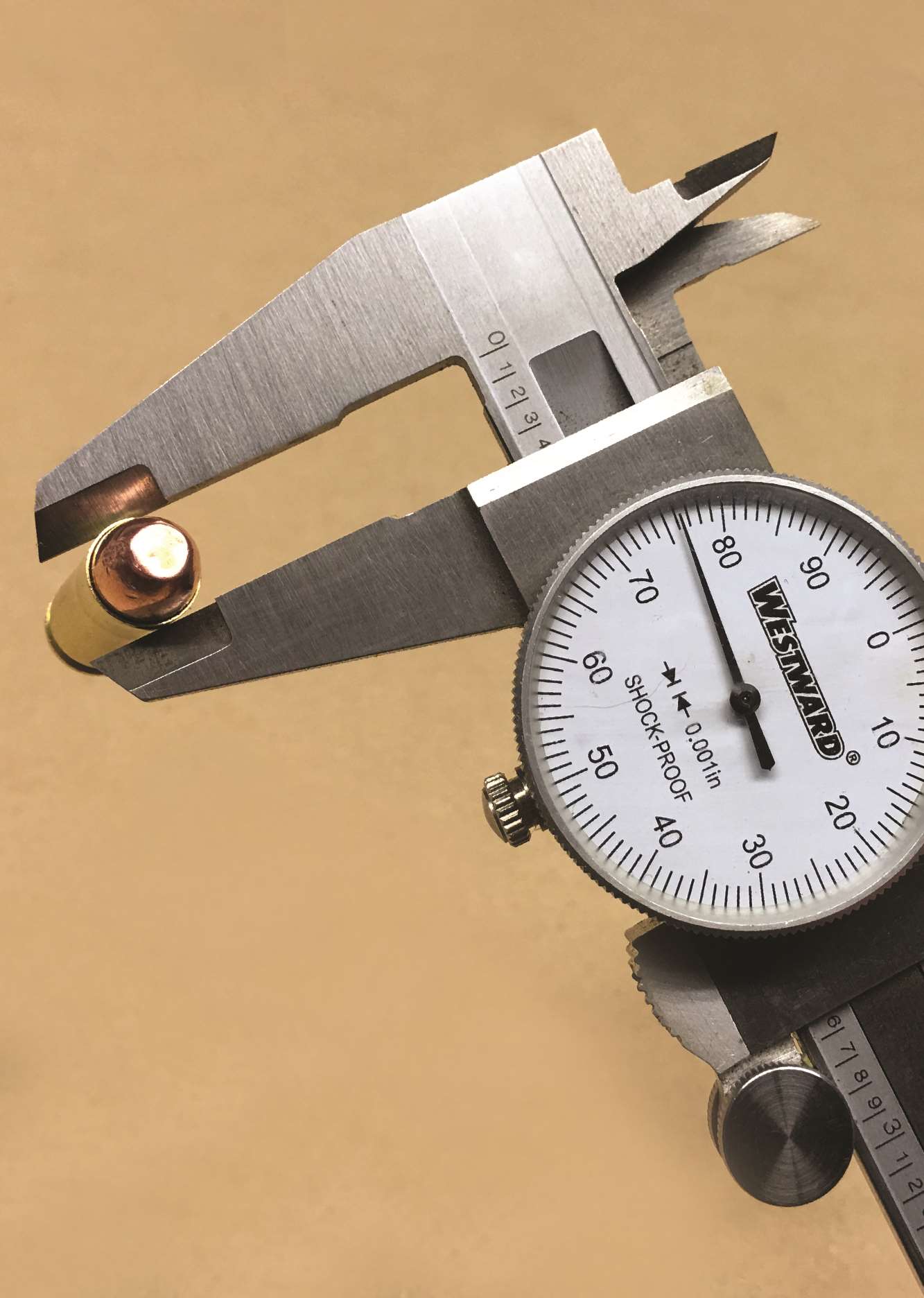
Here we get back to reloaded/remanufactured ammunition, and considerations for its use. The big name ammunition manufacturers have a built-in advantage that contributes to their (deservedly) stellar reliability: They control case and bullet variables to a greater extent than anyone who reloads on their own, or who wants to buy/use reloaded ammo, can do. Serious reloaders get remarkable results (often better than factory) by mimicking this greater quality control: They “lot” brass/bullets/powder/primers by multiple criteria, and remanufacture cases to high levels of consistency (trimming to length, neck-turning, etc.). “Bulk reloaders,” whether commercial or in your pal’s garage, trade utter reliability and accuracy for speed and cost-savings, and only measurement on the front end and “bang” on the back end can tell you whether their quality standards can meet those imposed by your particular firearm.
These variations—quite literally a few thousandths of an inch—are the real reason why some ammunition works in some handguns and not in others. Moreover, it is why blanket labels of “bad” or “cheap” may not really apply. When tiny and unavoidable dimensional differences in ammunition get added to tiny, unavoidable dimensional differences in firearms, it’s easy to see why not all ammo works in all guns.
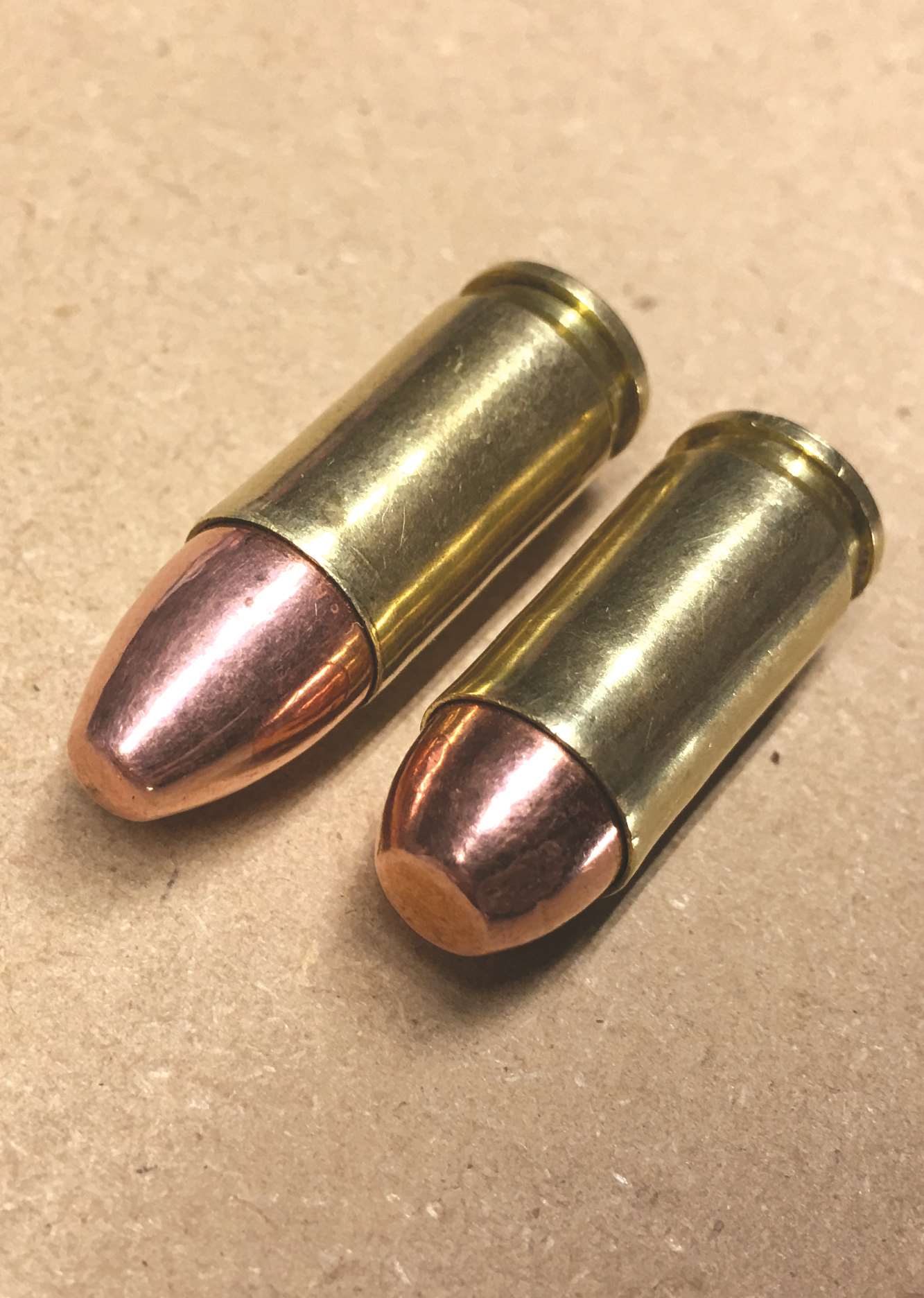
So, measure what works and follow those measurements if—not when—a change is forced upon you. And Carry On.
Editor’s Note: Many manufacturers warn against the use of any reloaded ammunition whatever, and it can void a firearm warranty.
Frank Winn has been studying arms and their relationship to tyranny, meaningful liberty and personal security all his adult life. He has also been a competitive shooter and firearms safety/shooting instructor for more than 20 years, though he won’t admit how many more than 20.













